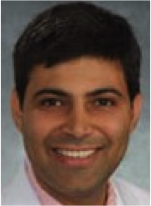
Please RSVP as soon as possible for a special presentation on deep brain stimulation (DBS) surgery the following Wednesday, August 26. Bay Area DBS experts Jaimie Henderson, MD, and Rohit Dhall, MD, will be speaking about an exciting new collaboration between Stanford and The Parkinson’s Institute to offer DBS treatment to Parkinson’s patients.
Details are:
DBS: New Collaboration between Stanford and The Parkinson’s Institute
When:
Wednesday, August 26, 1:30-3:30pm
Where:
The Parkinson’s Institute, 675 Almanor Ave., Sunnyvale (just off Highway 101 and Mathilda Ave.)
Note:
Free event. Light lunch will be provided by Medtronic. Seating is limited to 130 guests.
RSVP:
So that an accurate headcount can be determined for food, please RSVP by August 25 to Donna Gow, Medtronic, 415-370-3555.
Speakers:
This event features Jaimie Henderson, MD, neurosurgeon, Stanford, and Rohit Dhall, MD, movement disorder specialist, The Parkinson’s Institute.
 Dr. Henderson is an expert in the surgical treatment of movement disorders and chronic pain, and is active in research and development of improved DBS surgical techniques. In 1994, while on the faculty at St. Louis University, he started their Movement Disorders Surgery Program. In 2001 he joined the Neurosurgery staff at the Cleveland Clinic, in Cleveland, Ohio, where he spent 3 years developing innovative surgical techniques for deep brain stimulator placement. In 2004 he joined Stanford’s Movement Disorders Neurosurgery team.
Dr. Henderson is an expert in the surgical treatment of movement disorders and chronic pain, and is active in research and development of improved DBS surgical techniques. In 1994, while on the faculty at St. Louis University, he started their Movement Disorders Surgery Program. In 2001 he joined the Neurosurgery staff at the Cleveland Clinic, in Cleveland, Ohio, where he spent 3 years developing innovative surgical techniques for deep brain stimulator placement. In 2004 he joined Stanford’s Movement Disorders Neurosurgery team.
 Dr. Dhall recently joined the Parkinson’s Institute and Clinical Center. Prior to joining he was Medical Director of Neuromodulation at the Barrow Neurological Institute where he evaluated PD patients for appropriateness of DBS surgery, supported functional surgeons, and provided post-implantation care. He has conducted numerous studies including evaluation of: DBS devices designed to assess effects of target selection on cognition and gait; “asleep” DBS surgery; internal capsule anatomical variation on the effects on DBS; frequency reduction of DBS stimulation on gait and balance; and the effects of pharmacologic modulation of other subcortical/brainstem nuclei.
Dr. Dhall recently joined the Parkinson’s Institute and Clinical Center. Prior to joining he was Medical Director of Neuromodulation at the Barrow Neurological Institute where he evaluated PD patients for appropriateness of DBS surgery, supported functional surgeons, and provided post-implantation care. He has conducted numerous studies including evaluation of: DBS devices designed to assess effects of target selection on cognition and gait; “asleep” DBS surgery; internal capsule anatomical variation on the effects on DBS; frequency reduction of DBS stimulation on gait and balance; and the effects of pharmacologic modulation of other subcortical/brainstem nuclei.